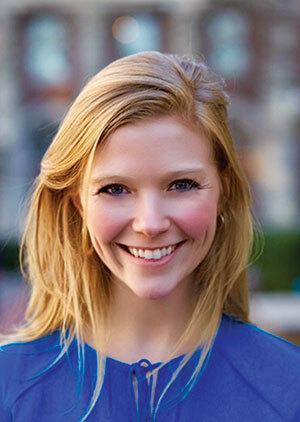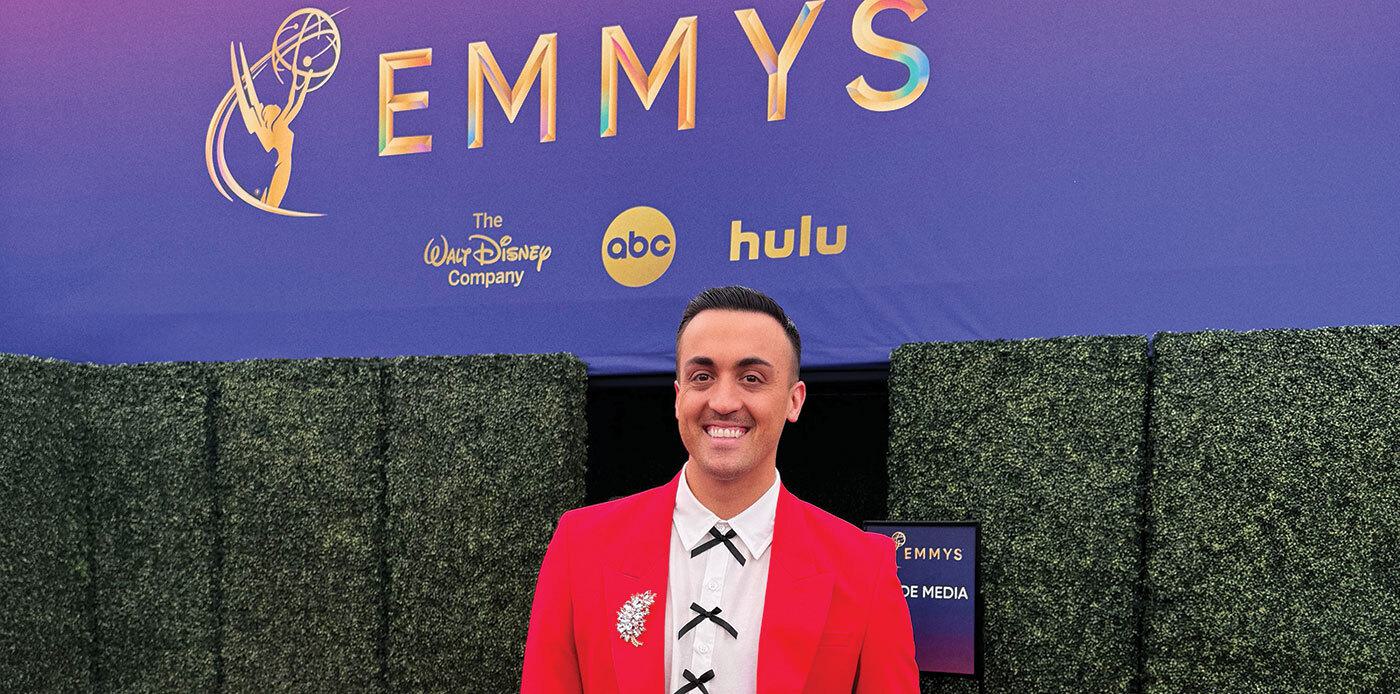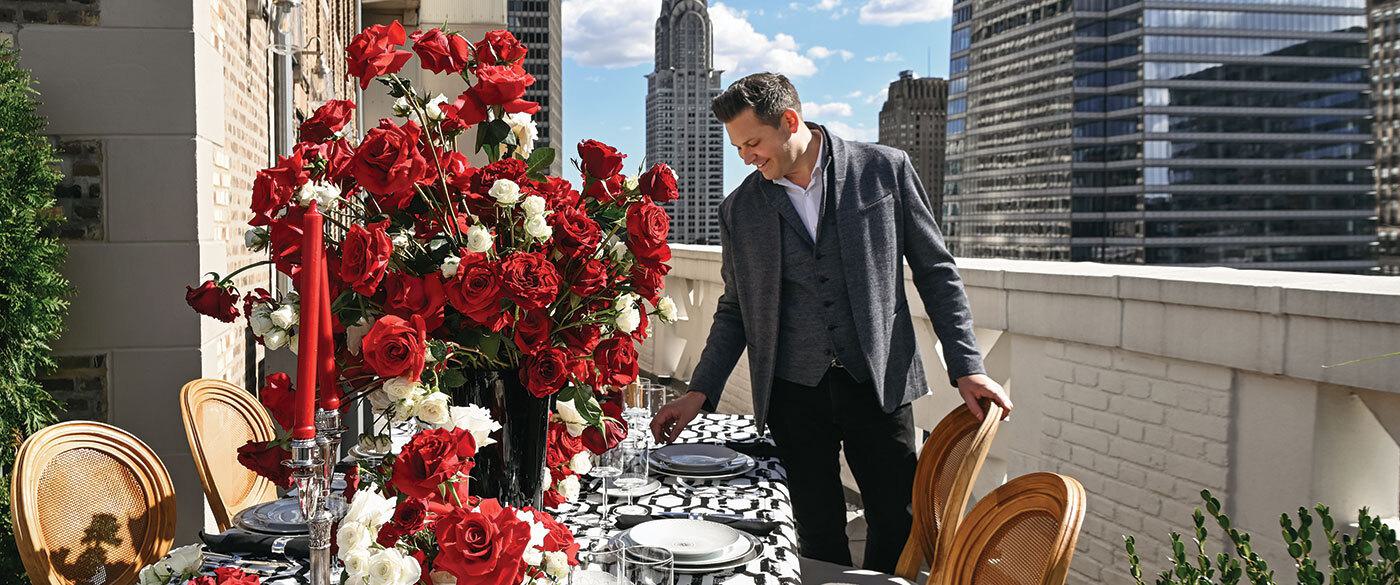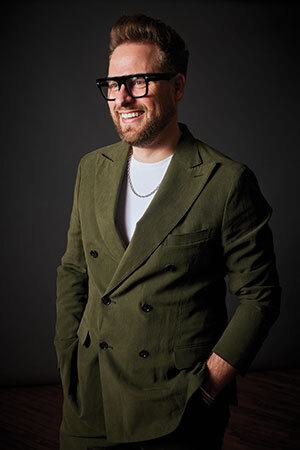By Rod Jones
If you can make it in New York, you can make it anywhere. That popular refrain based on a Frank Sinatra lyric is a testament to the work and dedication it requires to make a good enough living to make it by in New York. The professionals profiled here aren’t merely making it, though. They’re knocking it out of Yankee Stadium. Here are some �鶹��ý City University alumni enjoying successful careers in New York City, home of the university’s second largest alumni base.

Cari Griggs
For wealth manager Cari Griggs (BS Dance Management ’11), her �鶹��ý City University connections were a foot in the door in more ways than one. “I met my first clients because one of my classmates from �鶹��ý was an understudy in ‘�鶹��ý!’,” Griggs recalled. As she waited in the Broadway theater for the show to begin, she overheard the people seated next to her talking about the understudy who was called in to perform. “I said, ‘you’re going to love her!’ Months later they became my first clients and friends.”
They continued talking and Griggs discovered yet another connection. They turned out to be fans of �鶹��ý alumna Kelli O’Hara (BM Vocal Performance ‘98, HDHL ‘15) and had previously requested her to perform at a private party. O’Hara couldn’t make it, so she sent yet another �鶹��ý grad in her place. “They were like, ‘what is it with this �鶹��ý school? This place is turning out some talented people,” Griggs continued.
With seven years’ experience with Goldman Sachs, Griggs found a way to parlay her dance and arts management courses and internship experience into a career as a private wealth manager. She interned the summer after her sophomore year with an arts festival in Charleston, South Carolina, then after her junior year with NPR in Washington, D.C. That led to connections to a job with New York Public Radio in NYC, followed by an MBA from Columbia.
She believes her experience with arts and culture has made her more well-rounded, a trait that makes it easier to get to know potential clients. “Because you’re in private wealth, they want you to be able to relate to different types of people, they want people with interesting backgrounds with interests outside of money,” she said.
She continues to utilize her dance background as an active participant in the performing arts industry, from audience member to nonprofit board member. At �鶹��ý she also learned the importance of putting forth extra effort to gain success. “The discipline and intensity at �鶹��ý is something I will carry with me the rest of my life – the detail orientation, showing up on time – it teaches you that every small little thing can matter,” Griggs said. Her career path reflects her advice to current students: “Don’t underestimate how you can reach beyond what your degree says. Keep an open mind — you can take the degree you have and grow with it. Pursue what’s interesting to you and see where it takes you.”

Robert Postotnik
Robert Postotnik’s (BS Entertainment Business ’11) brain is always running full speed ahead to keep up with his many work projects. Luckily, his career encapsulates all his greatest passions, so he doesn’t seem to mind. Postotnik is vice president of Key Art Design for Paramount, a company whose properties include programming for Paramount+, Showtime, MTV and more. He’s in charge of creating the visual brand for dozens of TV shows — posters, photography and all design elements utilized for marketing. “In a typical day, I could touch anywhere from 10 to 20 projects that are in different stages,” he said. “There are a lot of plates in the air at all times.”
In his job, Postotnik works with several different people of varying skillsets. “It takes a village. To execute our ideas, we work with advertising agencies, photography teams, film crews, wardrobe, hair, makeup, set designers, production crews and the list goes on.” Postotnik said. “Once the art is created, we work with teams from marketing, media, press and social media to get the campaign out into the world.”
Every day is different. When speaking for this story, he had just returned from a whirlwind work trip that included LA for the Emmy Awards along with two different shoots, then Vancouver, then Atlanta, and back to his NYC homebase for yet another shoot. “Even when I’m on set, there are shows coming down the pipeline that I’m putting brain juice on. I’m always thinking about the next thing, putting together the puzzle pieces,” he said.
Postotnik came to �鶹��ý from a Milwaukee suburb in ’07 as an Entertainment Business major with an eye toward design, but not necessarily a traditional education in fine arts design. He performed in theater productions on campus for fun. “I never dreamed of being onstage professionally, but my time in theater really taught me a lot about public speaking and working with actors – it most certainly has shaped who I am and my love for the arts,” he said. He gained experience from his many outside-of-class endeavors like posters for the theatre school, special events in the Caf and working with a student-led ad agency in the Mass Communications department. He gained photography experience taking headshots for fellow students. He also did design work for the Performing Arts Academy on campus.
Knowing he wanted to work in NYC full-time, he’d spend spring and summer breaks there to make connections. While in college he interned for the Tony Awards, where he helped create designs and videos for social media marketing. Following graduation, Postotnik worked at AKA, a theatrical advertising firm working on prominent Broadway shows. He worked his way up to becoming an art director, which allowed him to put his own stamp on things.
He spent two years working directly with Disney Theatrical Group, on campaigns for “The Lion King” and “Aladdin.” He returned to AKA as a creative director and created the artwork for major productions like “Funny Girl,” “& Juliet” and “Anastasia,” which still to this day was one of his favorite projects. Since leaving Broadway, he’s been at Paramount for almost three years. “My favorite part of my job is working on ‘RuPaul’s Drag Race.’ I get to flex all my creative muscles from design to photography to fashion. The world of drag is such an expression of creativity, so the campaigns we create are limitless.”
Postotnik currently lives in Brooklyn with his husband Nick and their dog. “I am extremely fortunate to have my dreams and passions realized in my career. Having my art on a Playbill, working with Disney, creating art for TV shows – those have been my lifelong dreams. It’s not lost on me how rare it is to have those dreams become reality, but that gift pushes me to not get complacent and always strive to improve. There are always new ideas, new goals to achieve.”

Hank Stampfl
If you can imagine it, Hank Stampfl (BM Musical Theater ’06) will make it happen. That’s one of the traits of Revel Rouge, a private event planning/restaurant design consulting firm he started eight years ago. After planning and managing a few high-end catering events, it clicked — Stampfl realized he had the talent, skills and personality to arrange celebrity parties that attendees would remember for the rest of their lives.
Born and raised in Norwood, Massachusetts, Stampfl got his �鶹��ý degree and returned to the East Coast, this time New York City. He worked for a few years in the restaurant industry while auditioning for roles. After a heartbreakingly unsuccessful audition for “Tin Man,” Stampfl decided to take a break from theater life. He got deeper into running private events and became the general manager of some prominent Manhattan restaurants. But he felt something was missing. “So I took a leap of faith on myself,” Stampfl recalled, and started Revel Rouge.
Some of his regular clients are “The Real Housewives of New York City,” among many other celebrities. He’s done events in LA, Las Vegas, Puerto Rico and other far-flung locations, which means he’s made an artform of the vendor selection process. “When we leave, a lot of times those vendors are changed for the better. They’ve learned something from us because we’ve pushed them, inspired them to reach for their limit. They see the results and take pride in their work,” he said.
Even though his career ambitions pivoted from on-stage entertainment to arranging entertaining events, Stampfl feels that his college experience has proven invaluable to his business. “I have the knowledge of hospitality mixed with the mind of theater and dramatic nightlife,” he said. It also showed him the importance of the hustle. “You go from �鶹��ý all day, then to rehearsals, then squeeze in some homework. They make you a superhero.”
Music professor and Director of Opera and Music Theater David Herendeen recalled his first encounter with Stampfl as he was leaving his college entrance interview. “He said, ‘I hope you choose us. We really want you here,’” Stampfl said. “That really meant a lot.” Herendeen isn’t surprised that Stampfl is so successful at what he does, based on that first impression and working with him throughout his college career. He could immediately sense Stampfl’s natural entertaining personality. “I wanted to let him know he wasn’t just an auditioner. I really liked what he brought to the place and I was hoping that he would bring it into our home, our family, our school.”
Herendeen explained that Stampfl’s kind, personable nature shone brightly with a role he was playing in a student production of “Man of La Mancha.” Stampfl’s character was written to be abusive toward one of the female characters, “and the one who was bothered most by it was him. “We worked and acted our way through it, but it served to show the opportunities we gave him, the challenges we gave him and the challenges he rose to,” Herendeen added. “We always say the most important person on the stage is the person next to you. I look for people who are inclined that way. It’s a variation on the Golden Rule.”

Jay Wadley
Jay Wadley (BM Composition ’05) had a couple possible paths to NYC — musical theater or music composition. “There’s something about writing that really resonated with me,” Wadley noted, describing his steady pull toward the music composition route as his college life progressed. “During rehearsals, I wanted to focus more time on compositions. It’s more stimulating to me. I might have missed a couple stage entrances during rehearsals because I was backstage on my computer editing scores,” he quipped.
Born and raised in Edmond, Wadley grew up attending performances at �鶹��ý. With a pianist mother, he was exposed to music growing up and dabbled in writing and recording his own. He was writing choir music while still in high school. He produced music for bands through middle and high school on four-track and eight-track recorders, including his own band. He also learned how to use emerging computer recording software.
When it came time to find a college, he was already familiar with the work of �鶹��ý professor Edward Knight. “Knight was so good at creating a young community of composers. He helped us hear what else was going on in the world. Always very open to other kinds of composers,” Wadley said. He went on to earn a master’s degree at the Yale School of Music, where he met his future business partner. They both had a similar ambition to start an artist collective to compose for TV and film. Thus, Found Objects was born, a music production company based in Brooklyn.
Wadley has worked with such legendary composers as Phillip Glass and Rufus Wainwright and has won several awards along the way. His first big theatrical film score credit is “Indignation” by James Schamus, which in turn led to more work in the film industry. Another notable project was Charlie Kaufman’s “I’m Thinking of Ending Things,” a 2020 film where the musical score essentially plays a leading role.
At Found Objects, their staff of eight will have as many as 20 projects going at any one time. With a hearty portfolio in hand, Wadley’s career has evolved to where he can focus more and more on projects he’s most passionate about. “For me, it’s important to continue to strive for more work. I want to push my boundaries, collaborate with more artists,” he said. “The next phase is not to slow down, but to be able to be more selective. To take on the projects that are more creatively interesting to me.”
His advice to hopeful music composers is to create, create and create some more. “The process of putting something out in the world, and doing it over and over again, you’ll learn more from that than anything else,” he said. “When you hear your own work played back for you, you’ll hear it differently with other people in the room with you. You’ll be your own harshest critic.”
